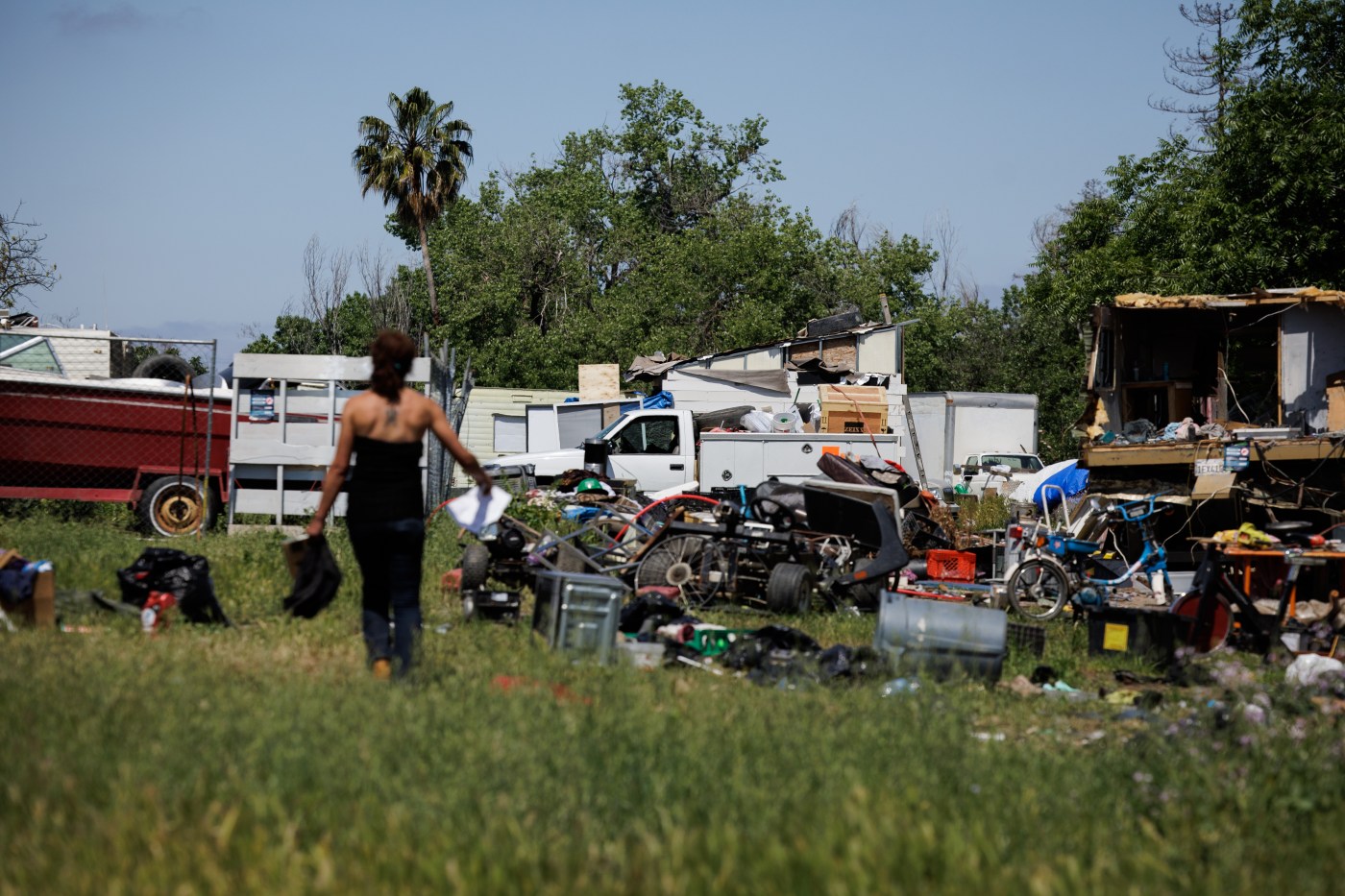San Jose officials are proposing to spend $120 million over the next fiscal year to combat homelessness — about 2% of the city’s expected $5.3 billion budget.
In addition to funding ongoing efforts to build more tiny home shelters and provide outreach services, the money could also help launch entirely new programs — from managed tent encampments to bus tickets to reunite homeless people with loved ones — in hopes of bringing many of the city’s estimated 4,400 unsheltered residents off the streets.
“Homelessness in San Jose is a humanitarian, fiscal, and environmental crisis that requires bold action,” said Mayor Matt Mahan, who’s in charge of steering the budget process, in his annual spending message.
The homelessness plans are outlined in the city’s latest budget proposal, released last week. Officials will continue to refine the budget before the City Council approves it in June. Here are four of the key proposals:
Sanctioned tent encampments
At the direction of state environmental regulators, city officials are developing an ambitious $25 million plan to move about 1,000 homeless people from creeks and rivers over the next year and a half. Without enough shelter beds for everyone, the city is exploring setting up sanctioned tent encampments or “safe sleeping sites” for about 500 of those unhoused residents.
Mahan has cited a managed tent camp in San Diego, which provides individual tents and basic security and sanitation, as a successful model. However, a sanctioned encampment in Sacramento offering few services is under threat after the local district attorney labeled the site a public health hazard and sued the city to close it.
There’s also legal uncertainty about whether sanctioned encampments constitute the “adequate shelter” cities are expected to offer before clearing unmanaged camps. However, the U.S. Supreme Court has signaled it may overturn that requirement in a decision set for next month.
The city is still determining what the sanctioned camps could look like and where they may go. Setting up the sites could cost between $18,000 and $40,000 per tent, or between $9 million and $20 million in total. The budget proposal also raised cost concerns and noted the city might only be able to provide minimal services.
“Homeward Bound”
City officials are proposing setting aside $200,000 for a pilot program that would pay for homeless people’s transportation and relocation costs to reunite them with friends or family within or outside the city.
San Francisco has a similar program, which has helped thousands of people since starting in 2005. In recent years, however, it’s been mostly sidelined as the city has focused on other homelessness efforts, including building supportive housing.
While homeless advocates sometimes dismiss such programs as “Greyhound therapy,” the budget proposal calls for closely tracking whether people find loved ones and secure a safe place to stay.
But how many would want to take advantage of the program, dubbed “Homeward Bound,” is unclear. Despite the commonly held belief that California cities like San Jose are a magnet for homeless people from across the country, an estimated 85% of unhoused residents in Santa Clara County were already living in the county when they became homeless, according to the most recent official survey.
Expanding “no return zones”
As the city adds more tiny homes, RV-safe parking lots and other temporary shelter options, officials also want to establish more “no return zones” in areas where they’ve cleared encampments and moved people indoors.
The city has already employed this strategy along the Guadalupe River downtown. Now, officials are discussing banning camping along more waterways and other areas where encampments have posed serious health and safety hazards.
Additionally, the budget proposal calls for creating no-encampment areas within two blocks of every planned and existing tiny home facility, safe parking lot and managed encampment, in part to convince residents to accept the sites in their neighborhoods.
The proposed budget would allocate almost $1 million next year for city parks employees and police to establish and enforce no return zones around the city.
More tiny home shelters
Erecting tiny homes and cabin shelters has been one of San Jose’s top homelessness priorities in recent years, and next year will likely be no different.
Related Articles
Letters: Wildfire safety | Affordable housing | Measure A | Senior rates | Trump scam | Embracing radicalism
Oakland Mayor Thao joins mayors from across country in D.C. asking for homelessness resources
Google is giving recently homeless Bay Area families $1,000 a month. Will it help?
Elias: California’s housing problems not fixed by allowing more density
Construction underway on tiny home shelter site at Sobrato property
Currently, the city operates six tiny home or cabin shelter sites, totaling more than 500 units, with three new facilities in the pipeline to add hundreds more beds.
Excluding state and federal grants, the city estimates it will spend around $25 million on the sites next year. The proposed budget recommends covering those costs by shifting $8 million from Measure E, a property transfer tax that mostly goes toward affordable housing.
Another $16.6 million in Measure E funds would be spent clearing waterways, sanctioned encampments and other homelessness efforts, leaving $11 million for housing. Some homeless advocates have argued using a large chunk of the money for shelters and other temporary solutions is a shortsighted strategy.












